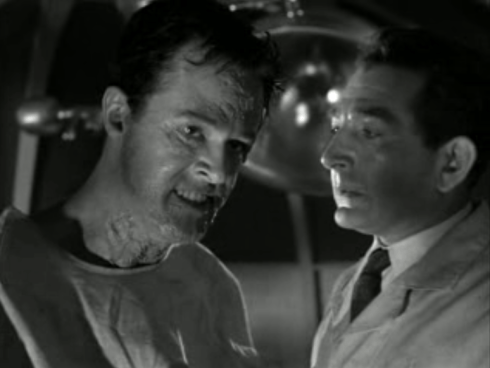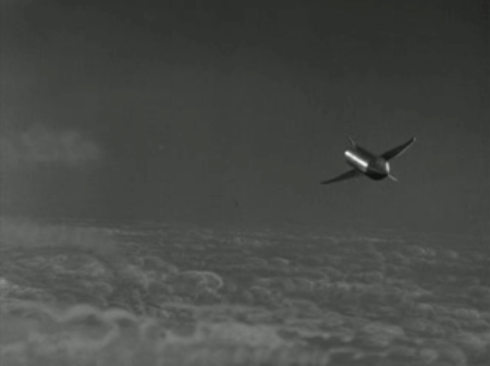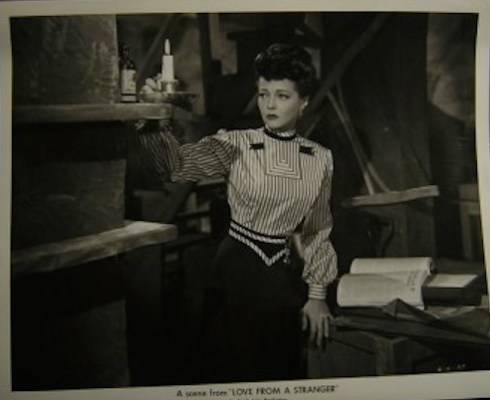
THE FOG 1980

Grease To Grit: The Unforgettable Journey of Adrienne Barbeau -Part 2 Including My Interview!
Few films in the horror canon conjure atmosphere as potently as John Carpenter’s The Fog (1980), a supernatural tale that drifts in on a chilling, glowing sea mist. Released in the wake of Carpenter’s breakout success with Halloween 1978, this film marked a pivotal moment for the director, who, together with producer and co-writer Debra Hill, sought to craft a ghost story that would both honor classic genre traditions and carve out its own spectral territory. Set in the fictional coastal town of Antonio Bay, The Fog opens with an unforgettable campfire prologue—John Houseman’s Mr. Machen spinning a tale of betrayal and vengeful spirits to a group of rapt children. This sequence, filmed late in production, sets the tone for a film obsessed with the secrets that lie beneath the surface of everyday life, and the way the past can seep into the present like a creeping shroud of revenge.
Carpenter assembled a perfect ensemble cast, blending established stars and new faces. Adrienne Barbeau, in her first feature film and Carpenter’s then-wife, is the magnetic force that keeps the film’s world in balance, as Stevie Wayne, a late-night radio DJ whose isolated lighthouse studio becomes a beacon—and a trap—as the fog rolls in. Jamie Lee Curtis, fresh off her iconic turn in Halloween, plays Elizabeth Solley, a hitchhiker drawn into the town’s unfolding nightmare. The cast also includes genre royalty Janet Leigh as the town’s centennial organizer, Tom Atkins as the rugged Nick Castle, Hal Holbrook as the tormented sot Father Malone, and Houseman, whose presence and smoothly poised voice lend the film a sense of old-world refinement.
Central to the film’s enduring power is its atmosphere, meticulously crafted by Carpenter and cinematographer Dean Cundey. Cundey’s work bathes Antonio Bay in shadow and spectral light, using a low-key color palette and carefully placed practical effects to make the fog itself a living, malevolent force, which it is. The bloodthirsty ghosts of the Elizabeth Dane ride in on the phantom ship as if it were the tide’s own spectral stallion.
I realize I’m waxing poetic here, but this film practically demands it—it’s the cinematic equivalent of hearing a masterfully told ghost story. Its visuals are so evocative and The Fog has always cast its deliciously eerie spell on me that I can’t help but get descriptive; it truly jumps off the screen like a lyrical tribute to the classic haunted tales from classic horror comic books like Eerie and Creepy, which had a distinct flavor equal parts lurid, atmospheric, and gleefully macabre.
The glowing mist, hiding vengeful lepers wronged a century before, becomes both a literal and metaphorical shroud, enveloping the town and its guilty history. Carpenter’s own synthesizer score pulses beneath the visuals, amplifying the sense of dread and otherworldliness that pervades every frame. The result is a film that feels timeless, its scares rooted not in gore or shock but in the slow, inescapable advance of the unknown.
The Fog is a dark fairytale spun from salt and shadow, where Carpenter conjures a world both luminous and haunted—painting the coastline with the colors of old wounds and restless spirits. Just like old man Machen’s story, it’s a midnight fable told by the sea, the film envelops its characters—and us—in a beautiful, inescapable haze of dread, where every rolling mist carries the weight of unfinished stories and the past returns, not as memory, but as a hallucinatory, living phantasm beautifully conjured. By now you can tell… I love this movie.
Thematically, The Fog is a meditation on repressed guilt and the consequences of buried crimes. As the town prepares to celebrate its centennial, Father Malone discovers that Antonio Bay’s founders lured a ship of lepers to their doom and built their prosperity on the resulting wreckage. The fog’s return, and the vengeful dead within it, is a reckoning for this original sin—a supernatural demand for acknowledgment and atonement. Coming to claim 6 lives in answer to the lives lost that fateful night, the phantom fire lured the doomed onto the rocks. The killings themselves are gruesome, jarring, and a shock to the nerves, all without the use of explicit gore.
Yet, as critics have noted, Carpenter is less interested in moralizing than in conjuring a mood of unease; the film is more about atmosphere than social commentary, inviting us to lose ourselves in its haunted world rather than dwell on its ethical implications.
Production on The Fog was famously fraught. Carpenter, unhappy with the initial cut, reshot and re-edited significant portions, adding scares and tightening the narrative to achieve the tension and coherence he felt were missing.
Despite these challenges, the finished film emerged as a commercial success, grossing over $21 million on a modest $1 million budget and cementing Carpenter’s reputation as a master of suspense. Critics at the time were divided: while some praised the film’s performances and eerie visuals, others found its story diffuse and its scares less immediate than those in Halloween.
Roger Ebert, for example, admired the style and energy but felt the film needed a stronger villain, while The New York Times’ Vincent Canby saw it as borrowing too freely from other genres and lacking the focused terror of Carpenter’s previous work. Yet, as often happens with Carpenter’s films, time has been kind to The Fog. Its reputation has grown, and its influence is visible in countless modern horror films that seek to evoke dread through suggestion and mood rather than explicit violence. So many of us who knew from its initial release that The Fog was a moody, surreal thing of beauty have been vindicated; over the years, the film has attracted a vibrant cult following, embraced by a passionate fan base, and is now widely admired for its unique atmosphere and style.
Today, The Fog stands as a testament to Carpenter’s vision and Cundey’s artistry—a film where every element, from the cast’s understated performances to the haunting score and the omnipresent mist, and the lure of Adrienne Barbeau & Stevie Wayne’s siren voice, works in harmony to create a world both beautiful and terrifying. It is a ghost story in the truest sense, one that reminds us the past is never truly gone, and that the most chilling horrors are those that drift quietly into our lives, obscured and unstoppable as the fog itself.
HALLOWEEN 1978

The Shape of Fear: How Halloween (1978) Redefined Horror and Haunted the 1970s:
When John Carpenter’s Halloween 1978 stealthily crept into theaters in 1978, it didn’t just terrify audiences—it rewrote the DNA of horror cinema. Made on a shoestring budget of $300,000, this unassuming indie horror film became a cultural juggernaut, grossing $70 million and birthing the slasher genre as we know it. Set in the fictional town of Haddonfield, Illinois, the film follows Michael Myers, a silent, masked killer who escapes a psychiatric hospital 15 years after murdering his sister, returning home to stalk babysitter Laurie Strode (Jamie Lee Curtis in her debut role) under the wary eye of his psychiatrist, Dr. Loomis (Donald Pleasence). What unfolds is a dark current of suspense that sweeps you along, a film where fear is conjured not through gore, but through the unbearable tension of what lurks just beyond the frame and the bushes and the shadows.
Jamie Lee Curtis’s breakout performance as Laurie Strode in Halloween didn’t just launch her acting career—it instantly established her as cinema’s ultimate Scream Queen and Final Girl, thanks to her relatable vulnerability and raw, resilient presence in the face of terror. The film’s massive success led Curtis to star in a string of iconic horror roles. She became its reigning spirit with her legacy as the definitive face of the genre, and began setting a standard for modern horror heroines.
Carpenter, then a 30-year-old filmmaker with a handful of cult films to his name, approached Halloween with the precision of a composer and the instincts of a provocateur. He and co-writer Debra Hill crafted a narrative steeped in suburban dread, where ordinary streets and picket fences hide unspeakable evil. The film’s opening sequence—a single, unbroken POV shot from the perspective of six-year-old Michael wearing a child’s clown mask and gripping a butcher knife with his little hands, as he murders his sexually active sister—immediately announces its ambition.
Using the Panaglide (an early Steadicam), Carpenter thrusts viewers into the killer’s psyche, blurring the line between observer and accomplice. This technique, paired with Dean Cundey’s shadow-drenched cinematography, turns Haddonfield into a labyrinth of menace. Wide shots linger on empty streets, while doorways and windows become thresholds for terror, as in the iconic moment when Michael’s blank mask materializes from darkness behind Laurie, illuminated by a hidden light Cundey famously dubbed “the boogeyman bulb.”
The film’s power lies in its restraint. Unlike the grisly exploitation films of the era, Halloween withholds explicit violence, relying instead on suggestion and rhythm. Carpenter’s synth-driven score—a pulsing, minimalist anthem—becomes a character in itself, its 5/4 time signature mirroring the arrhythmia of panic. The music, composed in just three days, is a stark counterpoint to the film’s autumnal visuals (they had one large bag of leaves the crew would have to keep unloading on the streets, pick them up and dump them all over again!), its electronic shrieks evoking a future where technology and terror intertwine. This duality extends to Michael Myers himself, a figure historian Nicholas Rogers describes as “the personification of evil,” stripped of motive or humanity. Clad in a painted William Shatner mask, Myers is less a man than a force, his silence amplifying the horror of his actions.
The Dark Side of Christmas: Exploring Bob Clark’s Pioneering Slasher Black Christmas 1974
While Halloween wasn’t the first slasher film, films like Psycho (1960) and Bob Clark’s Black Christmas (1974) laid the groundwork—it crystallized the genre’s tropes. Laurie Strode, the bookish “final girl,” (Carol Clover) became a blueprint for survivors, her virginal purity contrasting with the gruesome fates of her more promiscuous friends. The holiday setting, the masked killer, and the voyeuristic camera work became staples, inspiring franchises like Friday the 13th and A Nightmare on Elm Street. Yet Halloween transcends its imitators through artistry. Film scholar Adam Rockoff notes its “deliberate pacing and psychological complexity,” arguing that it “elevates suspense to an art form.”
Initial critical reception was mixed. Pauline Kael dismissed it as “dumb scariness,” while Roger Ebert hailed it as “a visceral experience—we aren’t seeing the movie, we’re having it happen to us.” Audiences, however, were unequivocal: lines stretched around blocks, and the film’s climax—Laurie’s desperate fight against Myers, culminating in his apparent death and ghostly disappearance—left theaters ringing with screams.
The National Film Registry enshrined it in 2006, praising its “cultural and aesthetic significance,” and directors like Quentin Tarantino and Jordan Peele cite it as foundational.
Halloween endures because it understands fear as a universal language. Its suburban setting mirrors the quiet dread of the late 1970s, a decade marred by Watergate and the oil crisis, where trust in institutions frayed. In Michael Myers, Carpenter created a metaphor for the era’s existential anxieties—a shadow that could not be banished, only survived. As the camera pulls back in the final frames, lingering on houses where ordinary lives unfold, the message is clear: evil never dies. It just waits, breathing softly in the dark, ready to reshape horror—and the world—again.
























































































































































































































